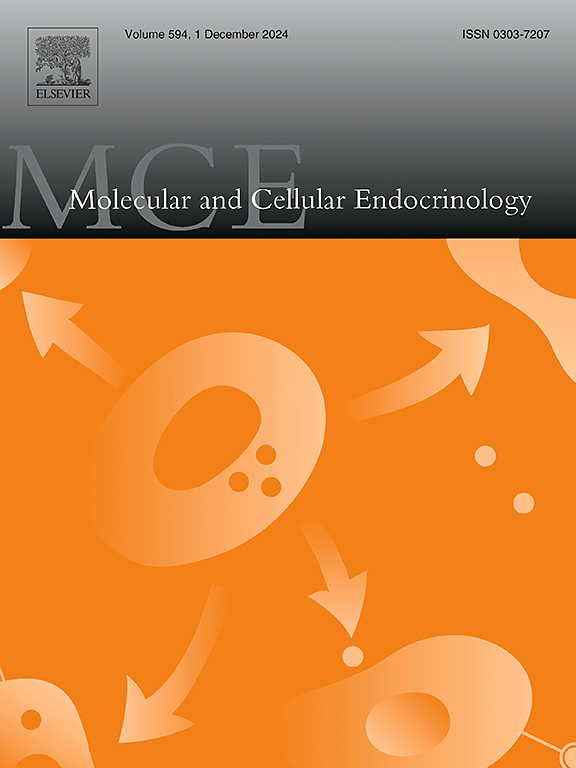Association between BRAFV600E mutation and gene expression of CLDN1, TIMP1, and KRT19 in papillary thyroid cancer
IF 3.6
3区 医学
Q2 CELL BIOLOGY
引用次数: 0
Abstract
The molecular mechanisms driving Papillary Thyroid Cancer (PTC) progression remain incompletely understood, although mutations in BRAF, are believed to affect the expression of key markers involved in PTC development. This study aimed to investigate the BRAFV600E mutation and its association with the expression of CLDN1, TIMP1, and KRT19 in PTC. A total of 93 thyroid samples were retrospectively analyzed: 42 cytologically diagnosed as PTC (Bethesda VI/V), 4 suspicious for malignancy (Bethesda V), and 47 as nodular hyperplasia (Bethesda II). The presence of the BRAFV600E mutation and the expression levels of CLDN1, TIMP1, and KRT19 were determined using qPCR. BRAFV600E genotypes included 70.2 % TT (wild-type), 17 % TA (heterozygous), and 12.8 % AA (mutant homozygous), with a mutated allele frequency of 0.210. The TA genotype was exclusive to the cancer group and significantly increased malignancy risk (OR 3.667; 95 % CI 2.473–5.437; p < 0.001). Patients harboring the mutated A allele were significantly younger (p = 0.029) and exhibited higher expression of all three genes. Using Youden-derived cutoffs from ROC analysis, TIMP1 overexpression (cutoff 1.148) was most strongly associated with BRAFV600E (OR 4.34; 95 % CI 1.82–10.33; p < 0.001). The BRAFV600E mutation and TIMP1 overexpression are strongly associated with malignant thyroid nodules, suggesting a role in the molecular pathogenesis of PTC.
BRAFV600E突变与甲状腺乳头状癌CLDN1、TIMP1和KRT19基因表达的关系
驱动甲状腺乳头状癌(PTC)进展的分子机制仍不完全清楚,尽管BRAF突变被认为会影响PTC发展中关键标志物的表达。本研究旨在探讨BRAFV600E突变及其与PTC中CLDN1、TIMP1和KRT19表达的关系。回顾性分析93例甲状腺标本:42例细胞学诊断为PTC (Bethesda VI/V), 4例可疑恶性肿瘤(Bethesda V), 47例结节性增生(Bethesda II)。采用qPCR检测BRAFV600E突变的存在以及CLDN1、TIMP1和KRT19的表达水平。BRAFV600E基因型包括70.2% TT(野生型)、17% TA(杂合型)和12.8% AA(突变纯合型),突变等位基因频率为0.210。TA基因型为癌症组独有,显著增加恶性肿瘤风险(OR 3.667;95% ci 2.473-5.437;P < 0.001)。携带突变A等位基因的患者明显更年轻(p = 0.029),并且三种基因的表达都更高。使用来自ROC分析的youden衍生截断值,TIMP1过表达(截断值1.148)与BRAFV600E相关性最强(OR 4.34;95% ci 1.82-10.33;P < 0.001)。BRAFV600E突变和TIMP1过表达与恶性甲状腺结节密切相关,提示在PTC的分子发病机制中起作用。
本文章由计算机程序翻译,如有差异,请以英文原文为准。
求助全文
约1分钟内获得全文
求助全文
来源期刊

Molecular and Cellular Endocrinology
医学-内分泌学与代谢
CiteScore
9.00
自引率
2.40%
发文量
174
审稿时长
42 days
期刊介绍:
Molecular and Cellular Endocrinology was established in 1974 to meet the demand for integrated publication on all aspects related to the genetic and biochemical effects, synthesis and secretions of extracellular signals (hormones, neurotransmitters, etc.) and to the understanding of cellular regulatory mechanisms involved in hormonal control.
 求助内容:
求助内容: 应助结果提醒方式:
应助结果提醒方式:


